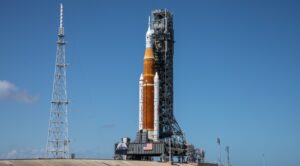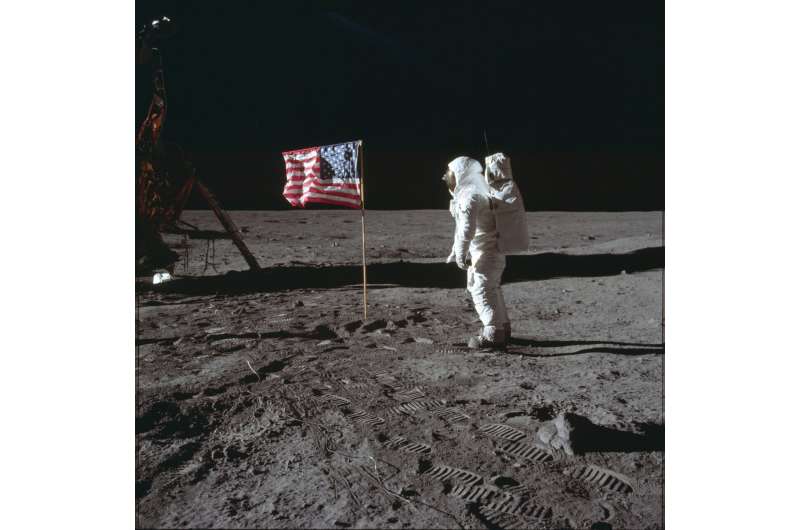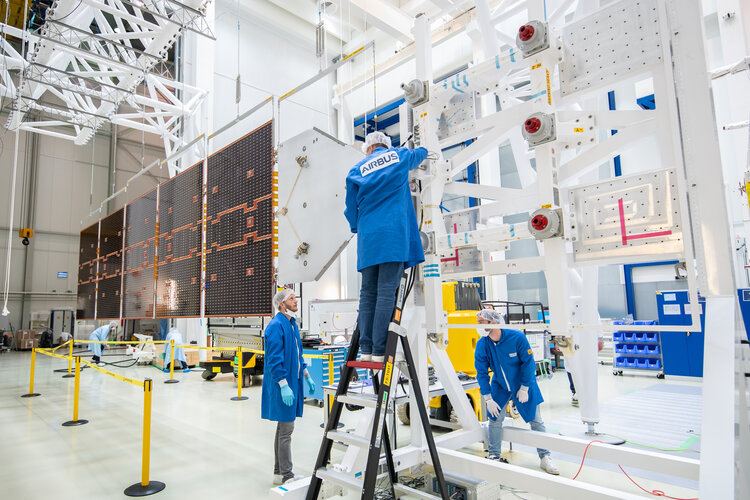New method can improve explosion detection
Wednesday, 27 July 2022 09:43 Computers can be trained to better detect distant nuclear detonations, chemical blasts and volcano eruptions by learning from artificial explosion signals, according to a new method devised by a University of Alaska Fairbanks scientist.
The work, led by UAF Geophysical Institute postdoctoral researcher Alex Witsil, was published recently in the journal Geophysical Research Letters.
W
Computers can be trained to better detect distant nuclear detonations, chemical blasts and volcano eruptions by learning from artificial explosion signals, according to a new method devised by a University of Alaska Fairbanks scientist.
The work, led by UAF Geophysical Institute postdoctoral researcher Alex Witsil, was published recently in the journal Geophysical Research Letters.
W China's space program eyes peaceful cooperation
Wednesday, 27 July 2022 09:43 A recent report by US magazine The National Interest demonized China's achievements in space by interpreting China's space exploration missions, including the lunar program and manned spaceflight, as "threats to US leadership in space" and a "detriment to US national security."
This report is just the tip of iceberg in the US' sustained attempts to suppress and discredit China's space prog
A recent report by US magazine The National Interest demonized China's achievements in space by interpreting China's space exploration missions, including the lunar program and manned spaceflight, as "threats to US leadership in space" and a "detriment to US national security."
This report is just the tip of iceberg in the US' sustained attempts to suppress and discredit China's space prog US, UK reportedly working on defense against Russian, Chinese hypersonic missiles
Wednesday, 27 July 2022 09:43 American and British arms companies have been working on the creation of defense systems against Russian and Chinese hypersonic missiles, though the project is only "in its infancy" in the United States, The Telegraph reported on Sunday.
In particular, British company Cohort has been developing technologies to destroy weapons moving five times faster than the speed of sound, Andy Tomis, th
American and British arms companies have been working on the creation of defense systems against Russian and Chinese hypersonic missiles, though the project is only "in its infancy" in the United States, The Telegraph reported on Sunday.
In particular, British company Cohort has been developing technologies to destroy weapons moving five times faster than the speed of sound, Andy Tomis, th CAES' Quad Core LEON4FT processor selected for on-orbit servicing spacecraft
Wednesday, 27 July 2022 09:43 CAES, a leader in advanced mission-critical electronics for aerospace and defense, has announced that its radiation hardened microelectronics are on board SpaceLogistics' Mission Robotic Vehicle (MRV) Spacecraft, and the Mission Extension POD (MEP), which will be deployed to assist in extending the life of aging satellites in space.
The MRV is the second-generation servicing vehicle follow
CAES, a leader in advanced mission-critical electronics for aerospace and defense, has announced that its radiation hardened microelectronics are on board SpaceLogistics' Mission Robotic Vehicle (MRV) Spacecraft, and the Mission Extension POD (MEP), which will be deployed to assist in extending the life of aging satellites in space.
The MRV is the second-generation servicing vehicle follow DOD secures critical material for Webb Telescope
Wednesday, 27 July 2022 09:43 NASA's James Webb Space Telescope recently captured the highest-resolution image of the universe in infrared that has ever been seen. The historic photos were made possible by the Defense Department's ability to secure strategic and critical materials necessary for the mission.
At the top of that list is the unique element beryllium.
Invisible to X-rays and with a stiffness six times
NASA's James Webb Space Telescope recently captured the highest-resolution image of the universe in infrared that has ever been seen. The historic photos were made possible by the Defense Department's ability to secure strategic and critical materials necessary for the mission.
At the top of that list is the unique element beryllium.
Invisible to X-rays and with a stiffness six times Eutelsat and OneWeb to Combine: Company Statement
Wednesday, 27 July 2022 09:43 Eutelsat Communications (Euronext Paris: ETL) and key OneWeb shareholders have signed a Memorandum of Understanding with the objective of creating a leading global player in Connectivity through the combination of both companies in an all-share transaction. Eutelsat will combine its 36-strong fleet of GEO satellites with OneWeb's constellation of 648 Low Earth Orbit satellites, of which 428 are
Eutelsat Communications (Euronext Paris: ETL) and key OneWeb shareholders have signed a Memorandum of Understanding with the objective of creating a leading global player in Connectivity through the combination of both companies in an all-share transaction. Eutelsat will combine its 36-strong fleet of GEO satellites with OneWeb's constellation of 648 Low Earth Orbit satellites, of which 428 are NASA prepares to award SLS launch services contract to Boeing-Northrop joint venture
Wednesday, 27 July 2022 07:50
NASA is preparing to award a contract to a Boeing-Northrop Grumman joint venture for Space Launch System missions that could run through the middle of the next decade.
The post NASA prepares to award SLS launch services contract to Boeing-Northrop joint venture appeared first on SpaceNews.
CAS Space puts six satellites in orbit with first orbital launch
Wednesday, 27 July 2022 07:43
Chinese launch services provider CAS Space successfully placed six small satellites in orbit early Wednesday with the first launch of the Lijian-1 solid rocket.
Buzz Aldrin's Apollo 11 jacket sold for $2.7 mn
Wednesday, 27 July 2022 05:20 The jacket worn by US astronaut Buzz Aldrin during his 1969 flight to the Moon aboard Apollo 11 was sold at auction for $2.7 million in New York Tuesday, Sotheby's announced.
The white jacket, adorned with an American flag, NASA's initials, a patch for the Apollo 11 mission and the name "E. ALDRIN," is part of a personal collection of items the 92-year-old astronaut decided to put up for sal
The jacket worn by US astronaut Buzz Aldrin during his 1969 flight to the Moon aboard Apollo 11 was sold at auction for $2.7 million in New York Tuesday, Sotheby's announced.
The white jacket, adorned with an American flag, NASA's initials, a patch for the Apollo 11 mission and the name "E. ALDRIN," is part of a personal collection of items the 92-year-old astronaut decided to put up for sal ESA selects Viasat for multi-orbit satellite communications study
Tuesday, 26 July 2022 21:12
Viasat said July 26 it has been selected to study multi-orbit satellite networks for the European Space Agency.
The post ESA selects Viasat for multi-orbit satellite communications study appeared first on SpaceNews.
Startup Wallaroo Labs wins Space Force contract to model performance of AI on edge devices
Tuesday, 26 July 2022 20:24
Wallaroo Labs won a Phase 1 Small Business Innovation Research study contract from the U.S. Space Force to model the performance of machine learning and artificial intelligence algorithms during space missions.
US regrets 'surprise' Russia exit from Space Station
Tuesday, 26 July 2022 20:05
The United States on Tuesday voiced regret over Russia's announcement that it would exit the International Space Station after 2024 and said it was taken by surprise.
"It's an unfortunate development given the critical scientific work performed at the ISS, the valuable professional collaboration our space agencies have had over the years, and especially in light of our renewed agreement on space-flight cooperation," State Department spokesman Ned Price said.
"I understand that we were taken by surprise by the public statement," he told reporters.
NASA's director of the ISS, Robyn Gatens, earlier said that the US space agency had not "received any official word from the partner as to the news today."
NASA itself plans to retire the ISS—a symbol of post-Cold War unity—after 2030 as it transitions to working with commercial space stations, and Gatens suggested Russia might be thinking about its own transition.
Asked whether she wanted the US-Russia space relationship to end, she replied: "No, absolutely not."
"They have been good partners, as all of our partners are, and we want to continue together, as a partnership, to continue operating space station through the decade.
Bidder pays $2.8M for jacket worn in space by Buzz Aldrin
Tuesday, 26 July 2022 20:02
Buzz Aldrin flight-to-moon jacket sells at auction for $2.8M
Tuesday, 26 July 2022 20:02


 Image:
EarthCARE taking wing
Image:
EarthCARE taking wing